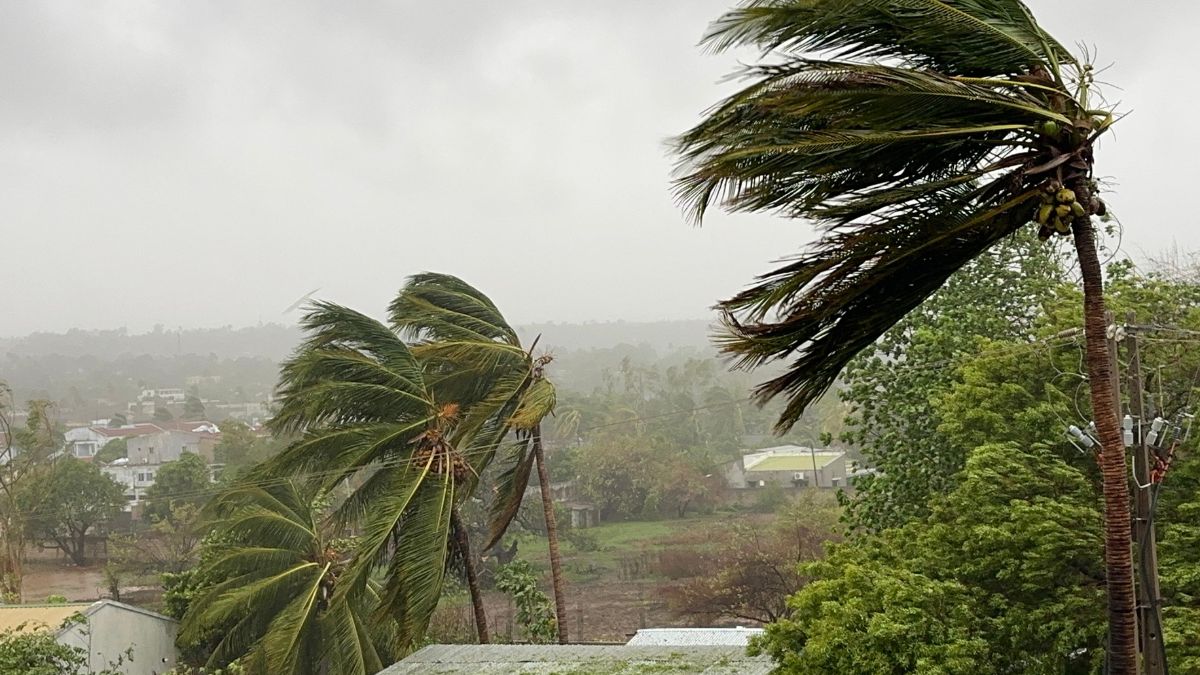Australian Prime Minister Anthony Albanese warned that the people of the country must “not become complacent” about the dangers posed by Tropical Cyclone Alfred despite the fact that it was downgraded to a tropical low weather system on Saturday morning. The cyclone was downgraded after it stalled withing a few kilometers of the Australian mainland on Saturday morning.
However, the authorities continued to raise warnings about severe wind and rainfall and urged residents of southeast Queensland and northern New South Wales to remain indoors, The Guardian reported. On Friday, a 61-year-old man was swept off a bridge by fast-moving flood waters near Dorrigo in NSW and remained missing on Saturday. The emergency services were able to briefly talk to the man while he was clinging to a tree branch. However, the authorities later confirmed that he was “unfortunately washed downstream”.
In the midst of all this, Albanese urged people not to drive through flood waters and said it was “important that people do not take this downgrading as a reason for complacency”. “[This system’s] impact will be serious and will intensify over coming hours and indeed over coming days,” the Australian premier said in a statement. “The impacts are already being felt, and there is worse to come in the hours ahead. We must remain vigilant," he added.
Storm followed by power outages
Over 250,000 homes in Queensland and 43,000 homes in NSW were left without power on Saturday due to the storm. The Queensland premier, David Crisafulli, said the outages were the “single biggest loss we have seen in over a decade”. The Gold Coast university hospital was also without power on Saturday morning and was running on generators. Albanese said six generators were being transported to Lismore on Saturday morning.
Meanwhile, NSW Minister for Energy Penny Sharpe said it could be “several days” before power was restored across the north of the state. “You are going to have to be patient,” Sharpe said. “We cannot risk the lives of those workers. But know that we are doing everything we can, as quickly as we can," she furthered.
Essential Energy, the state-owned electricity infrastructure provider, said that the debris, including fallen trees and vegetation, would need to be removed before powerlines could be assessed and repaired. The authorities noted that around 740 people in northern NSW had taken refuge across 21 evacuation centres by 10 am (local time) on Saturday. 20,000 people were subject to evacuation warnings in the region.
Impact Shorts
More ShortsCyclone warning downgraded
At 6 am (local time), Cyclone Alfred was downgraded again by the Bureau of Meteorology, effectively cancelling cyclone warnings. However, the authorities did not remove weather warnings – from Noosa to Brisbane. The bureau is now referring to the cyclone as “ex-Tropical Cyclone Alfred”, which has stalled in Moreton Bay near Bribie Island, about 55km north of Brisbane, and tracked further to the north.
While speaking on the matter, senior meteorologist at the Bureau of Meteorology, Miriam Bradbury, said the storm system had not moved position from 6 am to shortly before noon. “We do expect it to make that coastal crossing today,” Bradbury said. Matthew Callopy, a senior forecaster at the bureau, noted that the primary concern was now from heavy rainfall.
“Rainfall totals of over 250mm have already been observed around the Scenic Rim, and we’ve seen widespread totals of 100mm to 200mm both on the Gold Coast but also stretching up into the southern parts of Brisbane,” he said.
“As the remnants of Tropical Cyclone Alfred move inland, we will see more tropical moisture streaming across south-east Queensland and we are expecting widespread totals of 300-500mm, with localised amounts of 800mm-plus possible in some areas of south-east Queensland, particularly again around the southern part of where ex-Tropical Cyclone Alfred tracks," he furthered.


)

)
)
)
)
)
)
)
)



